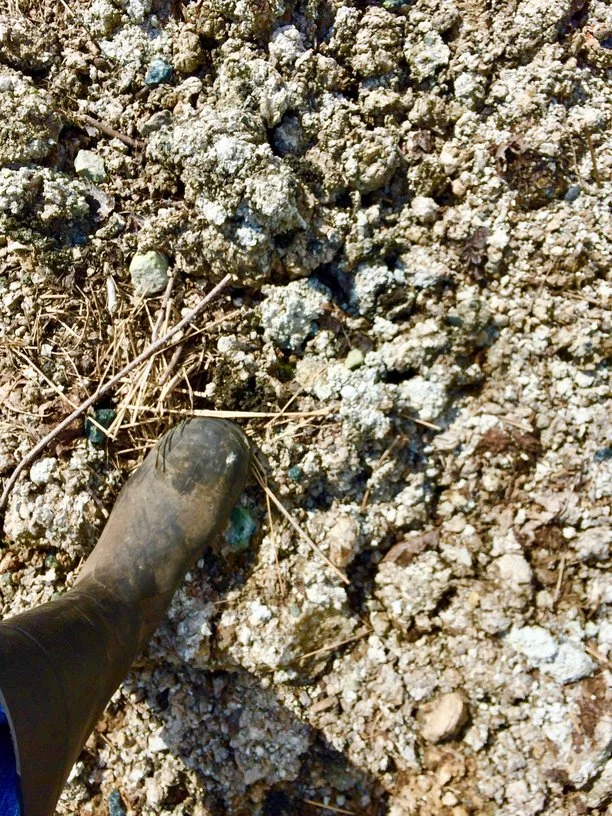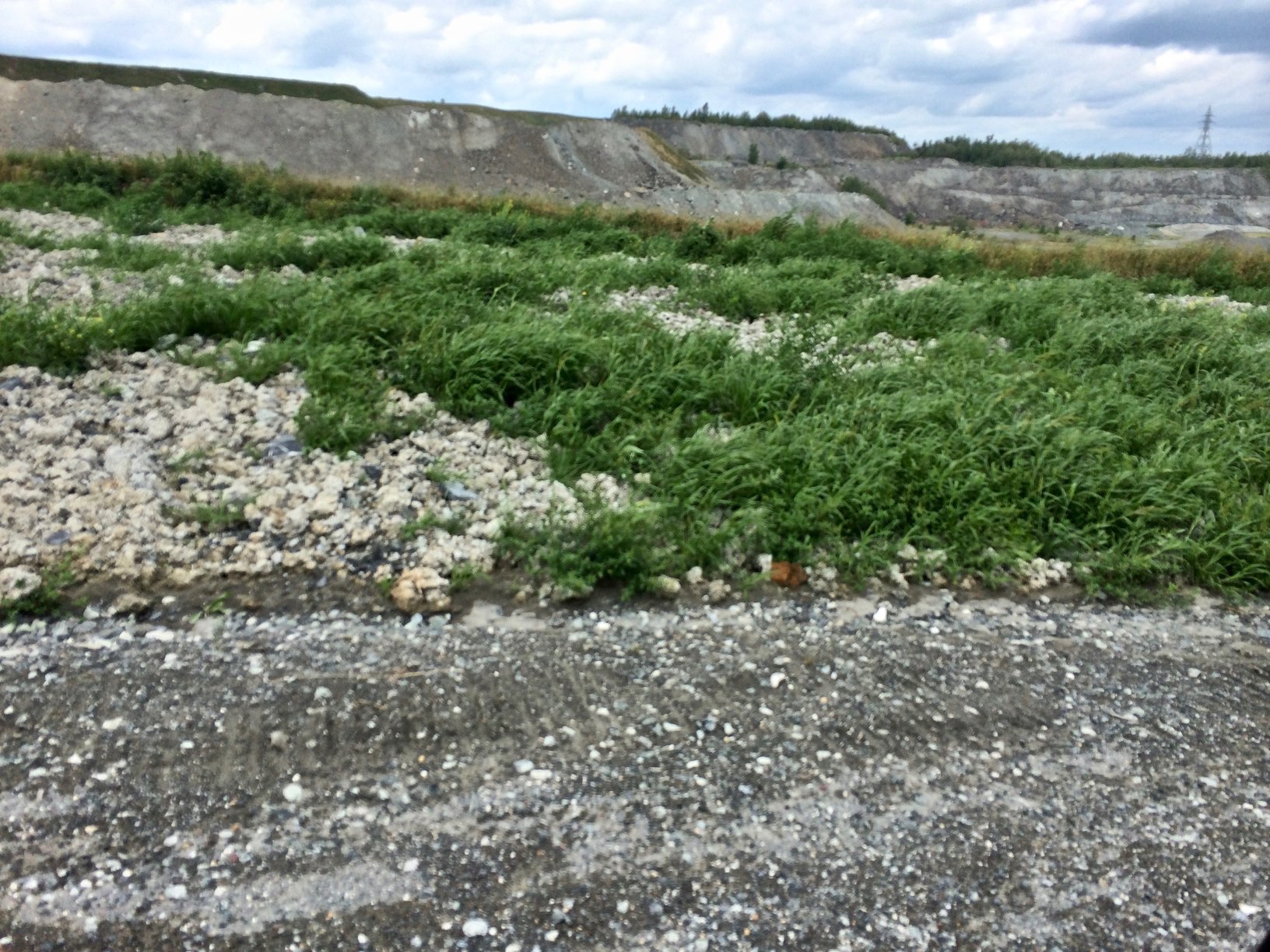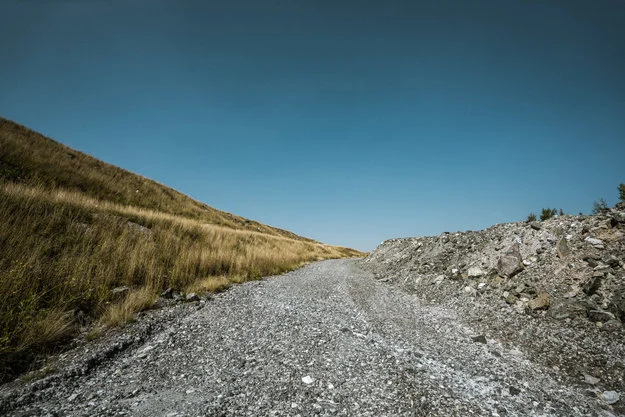Member Highlight
August 2018, updated October 2020
M.A.G.I.C. Land
Making Asbestos* Grow Impressive Conservation Land
Land reclamation by Englobe.
*Val des Sources is the name of the former town of Asbestos, announced in October, 2020.
~8 years after a one-time application of ~10” of engineered residuals mix, this rocky plateau of decades of mine tailings is a sustainable ecosystem supporting wildlife and - someday - recreation for Val des Sources residents. In the background are the huge abandoned mine factory buildings.
“I don’t think I’ve seen a more significant land reclamation project using biosolids anywhere in the Northeast,” said Charley Hanson (Resource Management Inc.) during an August 2, 2018 tour of the vast mine tailings plateaus at Val des Sources (formerly Asbestos), Quebec. There, biosolids, paper mill residuals, some gypsum waste, and digestates are blended in agronomic recipes to reclaim tailings rubble – barren rock piles and gravel that extends for miles.
Since 2004, Englobe, a soils and residuals management company and NEBRA member, based in Sherbrooke, has deployed nearly 400,000 tons of residuals to revegetate 500+ acres of land that may now be used for wildlife, park land, and recreation. Nicholas Leblanc organized tours in early August 2018, with Serge Loubier and other Englobe specialists explaining the details of the project.
“Reclamation of this sort is the best environmental story ever for biosolids and residuals recycling. There is no down side, no viable argument against it. This is residuals being the solution,” said Ned Beecher of NEBRA, who attended the tour. Similar large mine reclamation projects have shown similar dramatic success elsewhere in Quebec – and here and there across North America.
__________
The Details of Land Reclamation at Val des Sources
The Jeffrey Mine is the world’s largest open-air chrysotile asbestos mine. Operations – mostly by the U. S. company Johns-Manville – began in the early 1900s and ended in 1983 as health concerns ended asbestos use.
Englobe, a Quebec soil clean-up, materials management, and environmental engineering company, was founded over 50 years ago. Since 2004, they have been using engineered mixes of residuals - wastewater biosolids, paper mill residuals, autumn leaves, calcium sulfate (from gypsum waste), and food processing wastes - to form soils capable of sustaining natural, native vegetation. The project has included planting more than 12,000 trees and shrubs to jump start diverse ecology. And, looking ahead, Englobe envisions reclamation of almost as much acreage in the coming years.
This process of mine reclamation is not really magic. It requires…
a lengthy process of permitting (Quebec’s environment ministry strictly regulates all residuals and their uses);
agronomic engineering of the soil mixes, followed by small-scale pilot testing of soils, seed mixes, and timing;
construction of access roads and smoothing (to the extent possible) of the tailings; and, finally…
mixing the bulk materials according to the final recipe, flinging and pushing the soil mix in a 10-inch layer over the rocky rubble, and seeding with the selected mix of grasses and legumes designed for quick growth and establishment of plant diversity over time.
Throughout the process, regulations and Englobe’s own best management practices (BMPs) require ongoing testing and monitoring. For example, for the health and safety of its employees and area citizens, Englobe regularly tests for any airborne asbestos fibers that may be stirred up by its operations. (None have been detected.) Surface water and groundwater are monitored. And Englobe makes a point of communicating routinely with Val des Sources town leaders and residents, ensuring ongoing understanding of the reclamation process.
Gypsum residuals (foreground), wastewater biosolids (middle), and paper mill residuals (gray in back) are part of the soil mix used to restore native soil and plant ecosystems at Val des Sources, QC.
The August 2018 tours included technical briefings by an Englobe engineer (center) and an Englobe agrologist (right).
__________
Click the gallery photos below for full viewing:
The town of Val des Sources exists because of the mine.
Indeed, the town was moved south at several stages as the mine expanded, and the huge open pit can be viewed from a small park on its rim, just at the edge of downtown. Across the mine, in the distance, are the man-made ridges and plateaus of tailings removed from the mine - almost all coarse rock, mostly overburden and containing minimal asbestos mineral (chrysotile). As Englobe’s Leblanc notes, “even after its closure, Jeffrey Mine remains a strong fixture in the local identity.”
Looking northwest at the open-air Jeffrey Mine from a small park at the north edge of the town of Val des Sources (formerly Asbestos), QC. Note the plateaus of mine tailings - a total of ~800 hectares (1977 acres) - in the distance.










